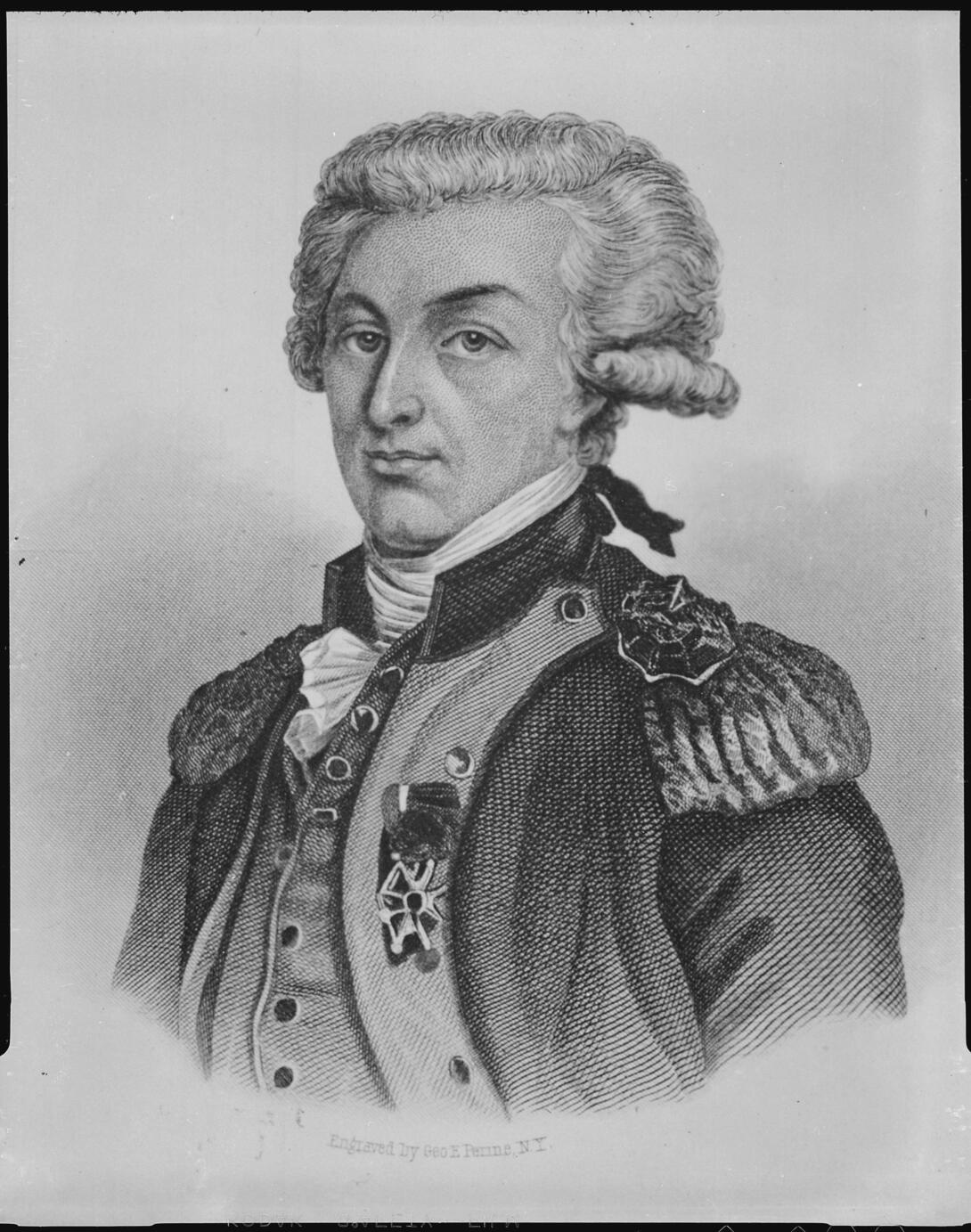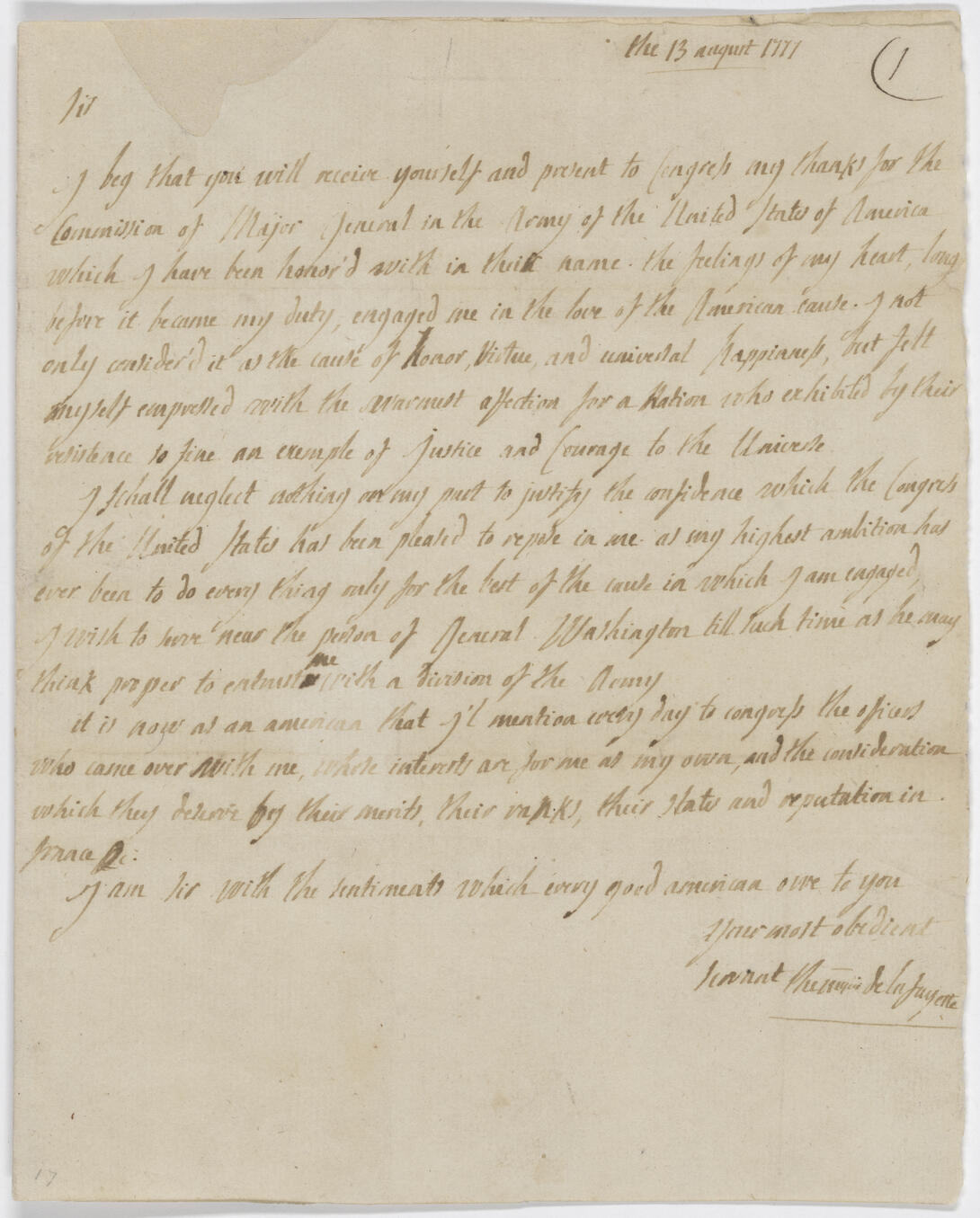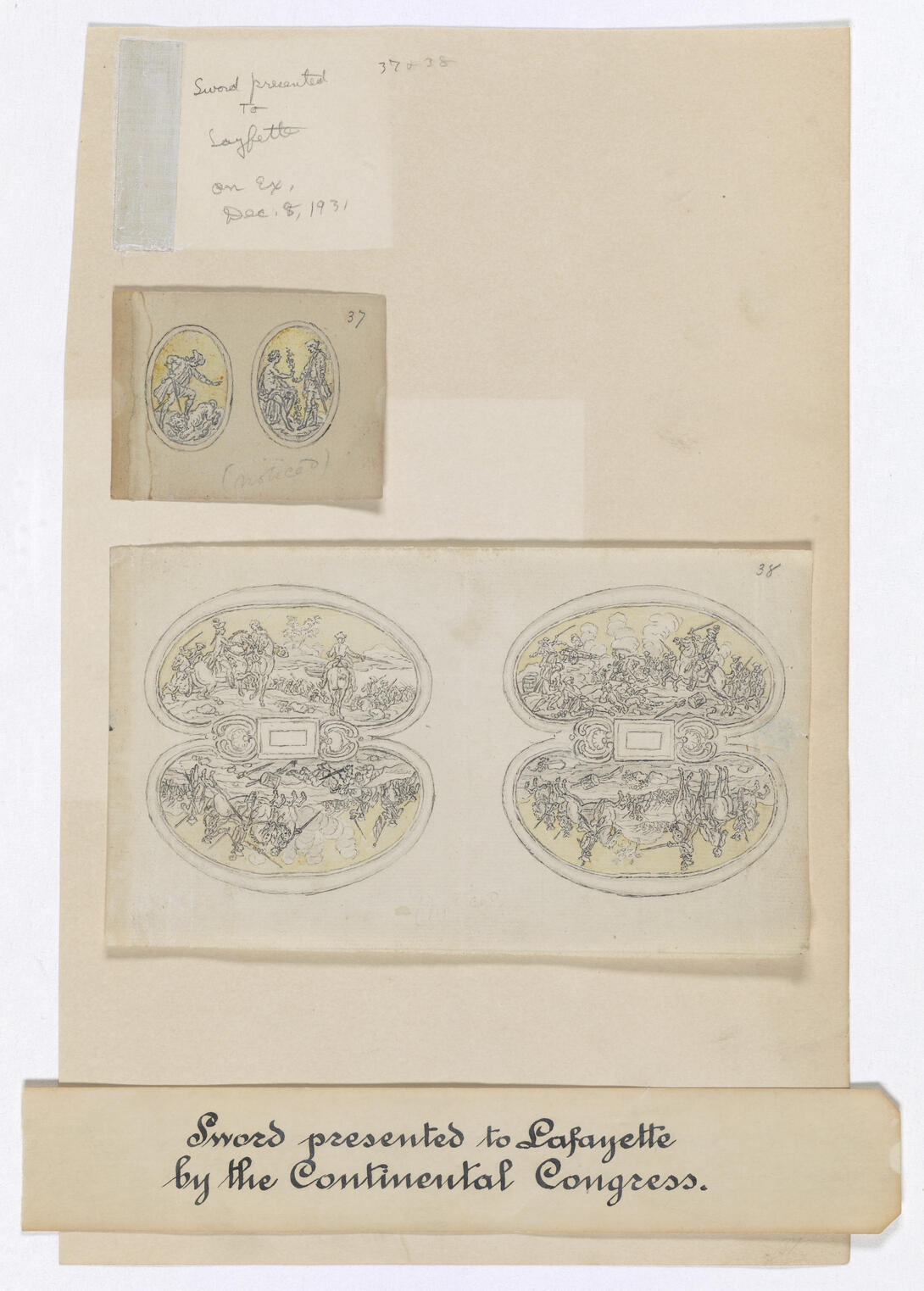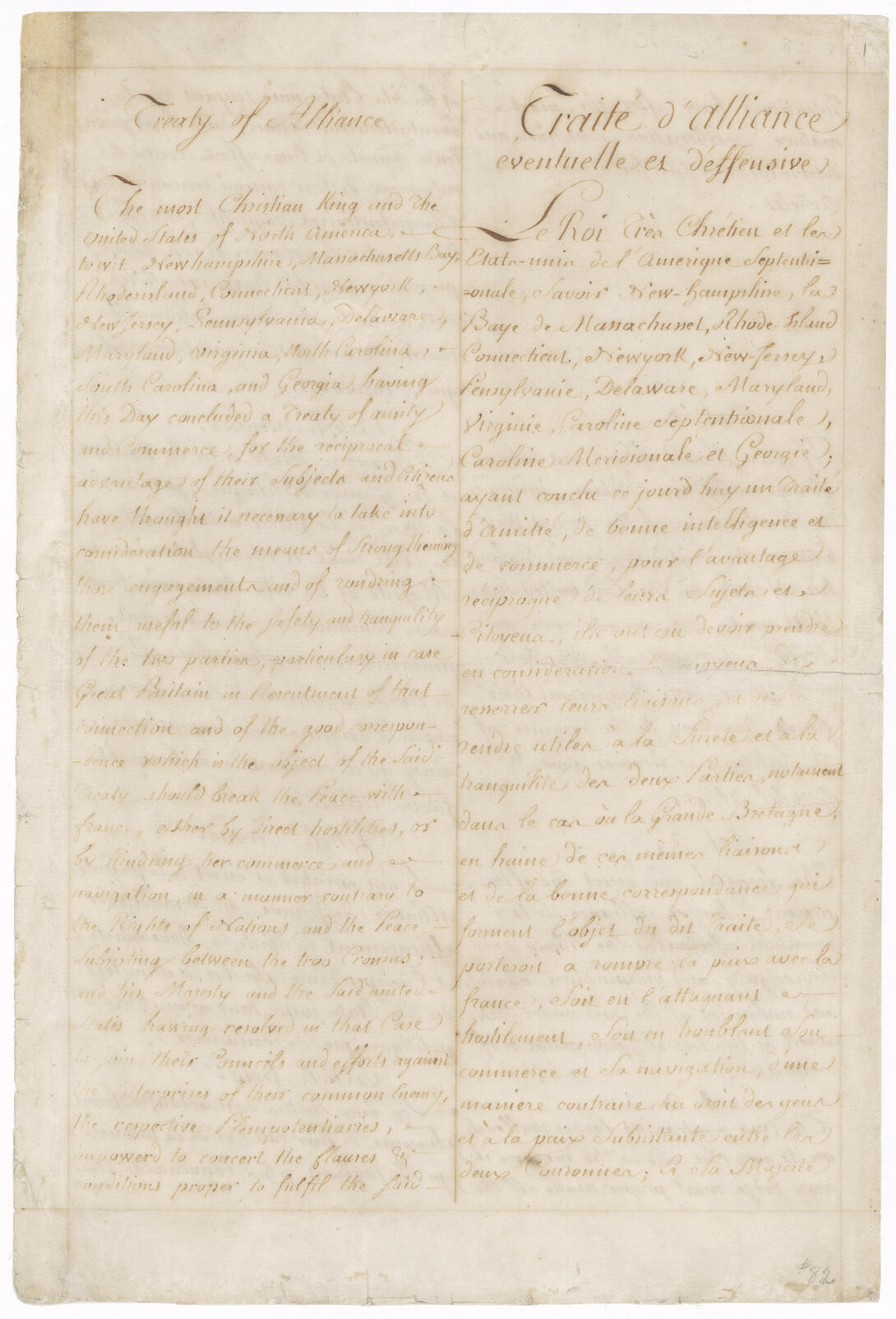Opening the Vault: Our Nation's First Ally
France played a critical role in supporting the United States as it fought for independence from Great Britain during the Revolutionary War.
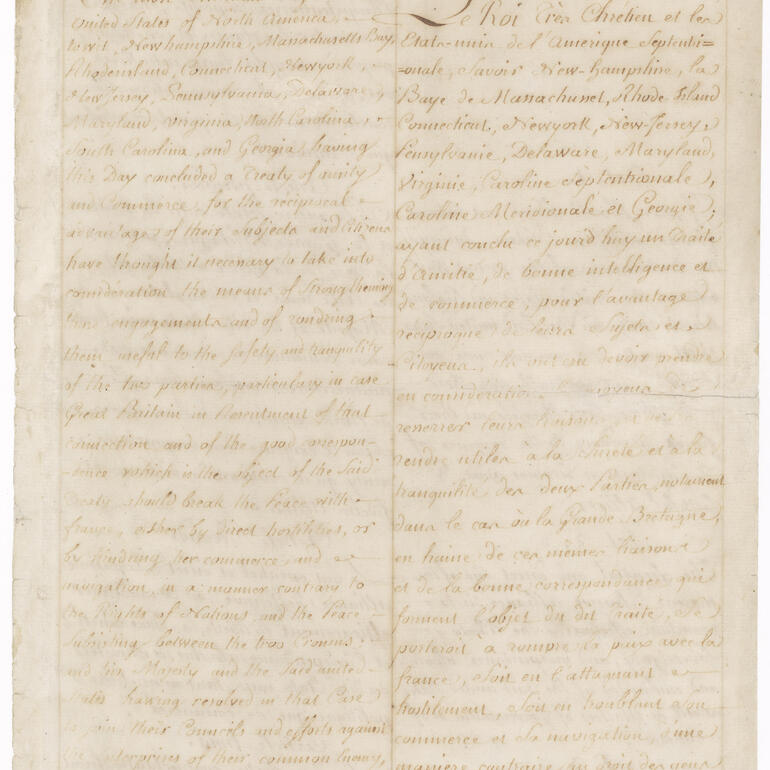
-
France played a critical role in supporting the United States as it fought for independence from Great Britain during the Revolutionary War, and the Marquis de Lafayette was a key broker of this bilateral relationship. Lafayette, a young French nobleman, volunteered to fight for the Continental Army. But France's support went well beyond Lafayette's personal contributions, providing the U.S. with military aid, naval support, and financial assistance.
-
The Marquis de Lafayette was instrumental in helping to secure France’s alliance during the Revolutionary War. In this letter to John Hancock, Lafayette writes, “I beg that you will receive yourself and present to Congress my thanks for the Commission Major General in the Army of the United States of America which I have been honor’d with in their name the feelings of my heart, long before it became my duty, engaged me in the love of the American cause I not only consider’d it as the cause of Honor, Virtue, and universal Happiness…”
Records of the Continental and Confederation Congresses and the Constitutional Convention
-
Lafayette was only 19 years old when he joined the Continental Army as a major general and became a member of General George Washington’s staff. On June 9, 1778, in the presence of Washington, Lafayette swore an oath of allegiance to the United States. Washington and Lafayette shared a close companionship throughout the course of the war.
War Department Collection of Revolutionary War Records
-
On October 21, 1778, Congress granted Lafayette temporary leave to return to France. Congress thanked him for his unselfish dedication to the Revolutionary cause and, as a token of appreciation, directed Benjamin Franklin to present Lafayette with “an elegant sword, with proper devices.” The sword’s guard design represented the military actions in which Lafayette had most distinguished himself. The handle included two medallions—one with America, represented by a woman, presenting a laurel branch to a Frenchman; the other with a Frenchman treading on a lion, which represented Great Britain. The sword was crafted in Paris and delivered to Lafayette in August 1779.
Records of the Continental and Confederation Congresses and the Constitutional Convention
-
The United States and France signed this military treaty on February 6, 1778, formalizing France’s financial and military support of the revolutionary government. The two nations agreed “not to lay down their arms, until the Independence of the united states shall have been formally or tacitly assured by the Treaty or Treaties that shall terminate the War.” The treaty was signed by Benjamin Franklin, Arthur Lee, and Silas Deane, representing the United States; and Conrad Alexandre Gérard, representing France.
General Records of the U.S. Government
This is page one of the Treaty of Alliance with France. Visit the National Archives Catalog to see all pages.




